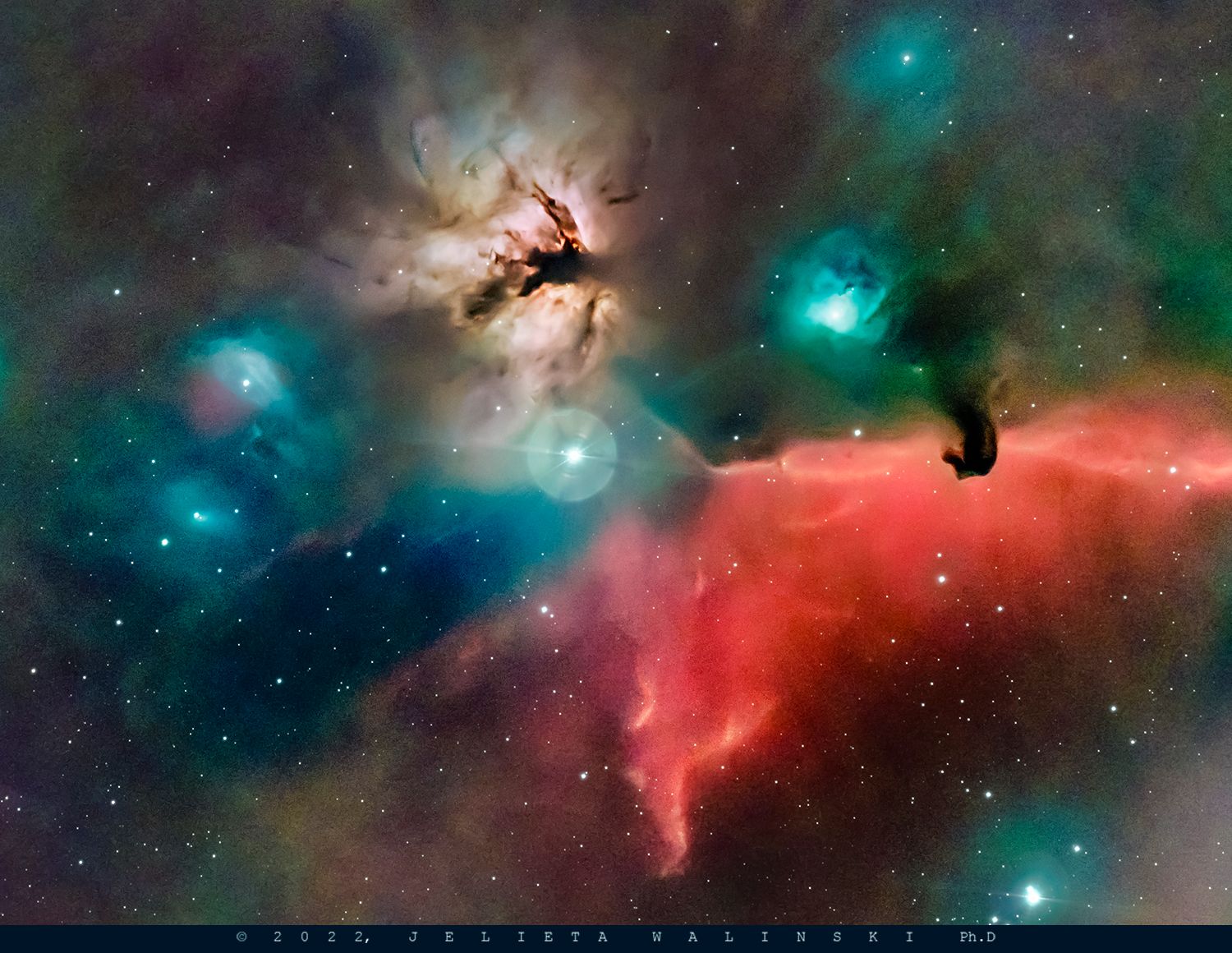EarthSky Community Photos
Submit your photo here. Comment or upvote on photo pages. Search via photographers' names. More improvements coming! To help, please donate.

Hickiwan, AZ, USA
02:39 am
Telescope: Celestron NexStar Evolution 9.25 235 mm Schmidt Cassegrain
Mount: Sky-Watcher EQ-6R PRO Computerized Equatorial Mount S30300
Camera ZWO ASI2600MCPRO
Starizona Hyperstar HS4-C925
ZWO AsiAir Pro WiFi Camera Controller
ZWO Standard Electronic Automatic Focuser
Optolong L-Pro 2" Multibabd pass Filter
Dew Heater Astrozap
Dew Shield Celestron
Guide scope: ZWO 30F4 Miniscope
Guide Camera ZWO ASI462 MC planetary camera Speed/high Sensitivity low noise Planetary camera
Samsung cellular phone
Sandisk usb drive
External Drive 5TB
PC
Image's were downloaded via bridge, Stacked in Deep Sky Stacker, processed in pixinsight and photoshop
At this month of December constellation of Orion is striking high in the Northern hemisphere. So I take the opportunity to capture its beauty.
Starting from Flame Nebula at the upper slightly north of this image. Designated as NGC 2024 and SH2-277, is an emissions nebula, which has a distance about 900 to 1500 light years away. It has a magnitude of 2, radius of 6 light-years.
At about about 285 degrees west you can find IC432. It is a reflection nebula. It is situated close to the celestial equator and, as, such, it is least partially visible.
At the 265 degree west IC 431 can be located. It is also located to the celestial equator and, as, such, it is least partially visible from both hemispheres in certain times of the year.
Looking at 35 degree North East IC435 is situated. It is a reflection nebula and still located to the celestial equator and, as such it is least partially visible from both hemispheres certain times of the year.
Going down East you can find NGC 2023. It is an emission and reflection nebula in the equatorial construction of Orion. This reflection nebula is one of the largest in the sky with a size of 10 x 10 arcminutes (Wikipedia). Distance to Earth is 1,300 light years.
The Horsehead Nebula is part of a dense cloud of gas in front of an active star-forming nebula consists of ionized gas lit from within by young hot stars, a dark clouds containing interstellar dust lies immediately in front. The dust absorbs the light from a part of the ionized cloud. A portion of this dark cloud has a shape somewhat resembling a horse's head.
Light frames 16
Dark frames 60
Flat frames 60
Bias frames 60
Images downloaded via bridge, stacked in Deep Sky Stacker, processed in pixinsight and photoshop.
HAVE A STARRY 2023 EVERYONE!








